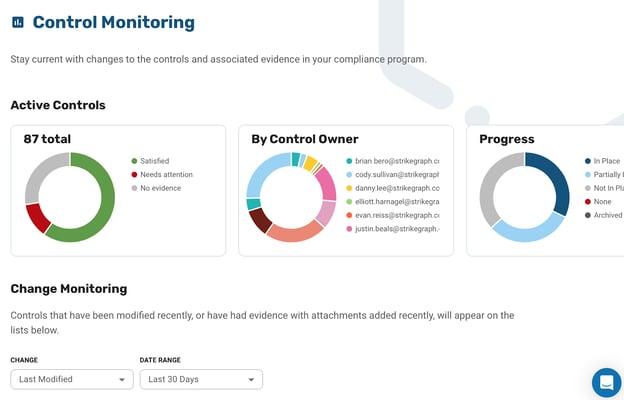Most mid-sized and larger businesses — as well as many smaller companies — need to maintain multiple certifications and meet multiple security regulations.
That’s a lot of complexity. And the complexity will only increase as security regulations continue to emerge and customers demand a greater sense of security and privacy.
In this post, we’ll explore what exactly is involved in maintaining multiple frameworks and certification, how companies traditionally have handled this situation, and how forward-looking organizations are addressing it today. Let’s get started.
What’s involved in maintaining multiple security frameworks?
Each framework you add to your security program brings with it added complexity and resource requirements.
Operations
Different certifications and regulations come with their own set of requirements, processes, and documentation. Implementing and managing training programs, technology, and infrastructure for these separate requirements can become extremely difficult in terms of time and resources.
Vendors
Especially for small and mid-sized companies, achieving and maintaining multiple certifications often involves hiring outside vendors for audits, assessments, ongoing monitoring, and any non-compliance issues or security breaches — all diverting attention and funds away from other strategic initiatives.
Documentation and reporting
Documentation and reporting are required for security certifications. Maintaining records, generating reports, and providing evidence of compliance is a time consuming task, and it grows exponentially more burdensome as more frameworks are added to your security program.
Change and adaptation
Security regulations and certifications aren’t static — they evolve over time. Businesses must stay current changing requirements and adapt their processes and systems accordingly. This requires ongoing monitoring, evaluation, and adjustment — for every framework in play.

Traditional approaches to multi-framework security
Many companies used to — and some still do — take a piece-meal approach to compliance. They address individual security frameworks in isolation rather than adopting a comprehensive and integrated approach to security management. What does this look like?
Oftentimes, compliance efforts are implemented reactively and are limited to the immediate needs of a single regulation or certification. This means the organization loses sight of the bigger picture of how these requirements fit into the company’s overarching security posture.
Furthermore, since each framework is implemented in isolation, they aren’t aligned with a cohesive security architecture that holistically addresses threats and vulnerabilities. This also means that opportunities for leveraging common security controls or practices across multiple compliance requirements are often overlooked, leading to unnecessary complexity and redundant efforts.
How tech-savvy companies manage multiple frameworks today
As the number of security certifications companies are required to maintain continues to skyrocket, the traditional piece-meal approach simply isn’t a viable option. It sucks too many organizational resources and takes too much time. So what are companies to do?
The answer is simple: Use a platform that allows you to map one control — and its associated evidence — to multiple security frameworks.
Enter Strike Graph.
Strike Graph lets you map controls you've already implemented to satisfy the requirements of one framework to other frameworks, saving you and your people loads of time and effort in the process.

This multi-framework mapping means that when you’re reviewing your controls, you’ll be able to clearly see which controls are mapped to which frameworks.
Let’s say you’re pursuing two or more frameworks simultaneously. If the two frameworks have a lot of overlap — like ISO 27701 and GDPR or SOC 2 and HIPAA — you won’t have to worry about mapping each associated individual control to each framework. Instead, you’ll be able to use the controls you’ve already created for, let’s say ISO 27001, for GDPR, or vice versa.
This feature also allows you to easily add evidence across all of your frameworks with one action.

Once that evidence is linked to your associated controls, it will also automatically support the frameworks to which those controls are mapped. This makes documentation and evidence collection an absolute breeze.
Now, let’s say you need to update a control — your privacy policy for example — across all of your frameworks. Multi-framework mapping makes this a cinch too.

You can even check when controls were last modified via Strike Graph’s Control Monitoring feature.
Last but not least, having the ability to map one control to multiple security frameworks future-proofs your business against unexpected new security requirements. You can easily map your existing controls to whichever frameworks become necessary, making your business more agile and able to handle the constantly-shifting compliance landscape better than your competitors.
.jpg?width=1448&height=726&name=Screen%20Shot%202023-02-09%20at%202.57.5-min%20(1).jpg)











